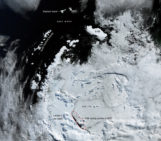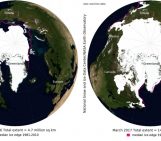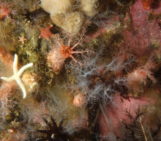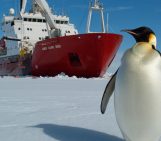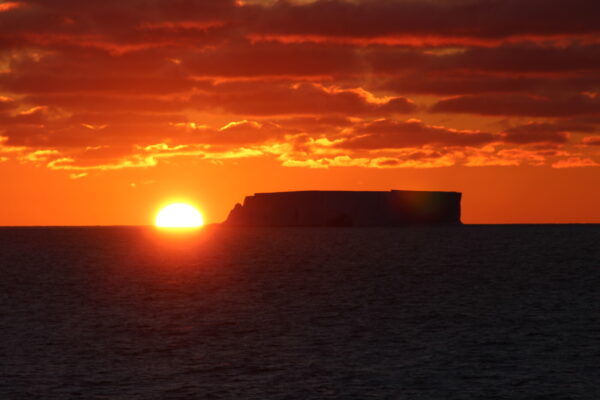
The deep Southern Ocean is full of giants! Some of them scared the sailors for centuries, like the colossal squid or, as they called it, The Kraken. They thought it was a huge monster capable of sinking ships! Far from it, these giants ran away from us, and we still know very little about them! They live in depths where the light cannot penetrate, the largest ecosystem on Earth, the Deep-Sea! They are rarely, or never, caught by scientific cruises! The questions stand: Who are they? How large can they be? How many are there? And how can we reveal the life of these creatures? Let’s take a dive into the deep ocean and find out…
The Polar Gigantism
Both polar oceans, the Southern Ocean and the Arctic Ocean, host some of the largest animals in the World’s oceans. The phenomena of organisms at higher latitudes having larger sizes is called “polar gigantism”. This happens because the near-freezing waters hold more dissolved oxygen when compared to warmer waters, allowing organisms to grow to larger sizes. Furthermore, there is an abundance of food, which favours the large size of these organisms as there is no limitation of resources to sustain larger bodies. Examples of this gigantism, in the Southern Ocean, are the Colossal squid (Mesonychoteuthis hamiltoni) which is the heaviest invertebrate on Earth (weighting up to 500 Kg), the Wandering Albatross (Diomedea exulans) which is the largest flying bird with a wingspan of 3.5 m, both Antarctic and Patagonian toothfish (Dissostichus mawsoni and Dissostichus elegionides) that can grow up to 2 m and weight more than 150 Kg (Figure 1), or even the Antarctic Blue Whale (Balaenoptera musculus intermedia) which is the largest animal on Earth weighting up to 200 tonnes and measures up to 33 m.

Figure 1: Left – Wandering albatross (Diomedea exulans) at South Georgia; Right – José Queirós (1.82 m) with a Patagonian toothfish (Dissostichus eleginoides) [Credits: José Queirós]
Fishing in the Southern Ocean: an opportunity!
Studying these giants is not easy. With few exceptions like the Wandering Albatross that breeds on land and scientists can reach them (check out this video to see scientists working with these, and others animals), most of these large species inhabit the Southern Ocean deep-sea. Deep-sea research is generally expensive but together with the additional high logistical costs to operate in the Southern Ocean it is one of the reasons that we still know very little about the fauna and the structure of the communities of the Southern Ocean deep-sea. And it is here that fisheries can be a useful tool to science. In the Southern Ocean there is an established (in some areas just exploratory) fishery that targets one of these giants! The toothfish fishery is distributed all around the Antarctic continent, spreading north up to the Subantarctic Islands. This is a deep-sea fishery that uses a longline system (a huge line with baited hooks that stays on the bottom of the ocean for several hours). Despite this fishing technique being highly selective, the bait on the hooks, or even the toothfish itself, can occasionally attract different species. Furthermore, the number of hours that fishing vessels operate is higher than any research vessel, and with that the chance to get a surprise is higher! Toothfish fisheries have proven to be highly useful for scientists with regards to studying these deep-sea giants! Actually, the only Colossal squid ever caught until today (Figure 2); one of the largest Giant Antarctic octopus ever seen (Figure 2); or even the largest recorded Patagonian toothfish were all caught by a fishing vessels! But that’s not everything! Capturing toothfish in large numbers allows us to use the toothfish as a sampling method itself! Yes, you read correctly, the toothfish can be a sampling method like a research net, let me tell you how…
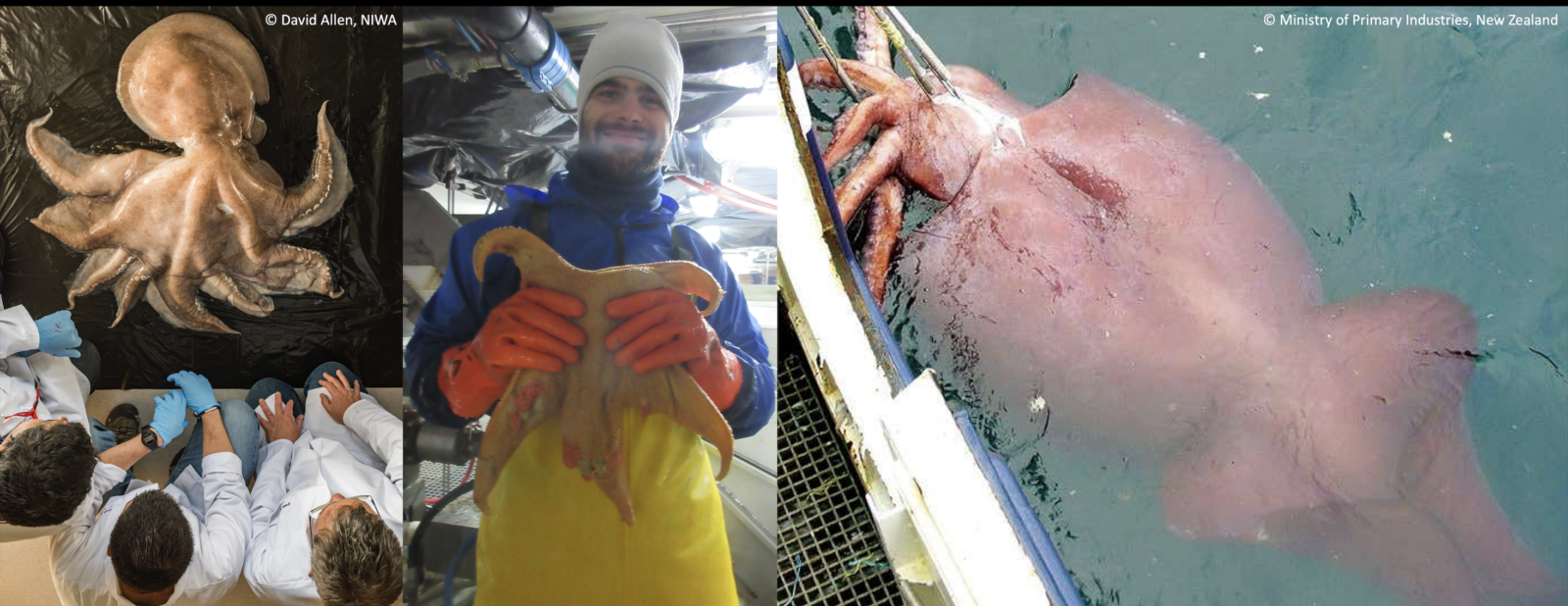
Figure 2: Left – One of the largest Giant Antarctic Octopus (Megaleledone setebos) ever sampled; Middle – José Queirós with Giant Starfish (Asteroidea); Right – the moment of capture of the Colossal squid (Mesonychoteuthis hamiltoni) from the fishing vessel San Aspiring. [Credits: David Allen, NIWA (left), José Queirós (middle), Ministry of Primary Industries, NZ (right)]
Toothfish: our best sampling method!
The toothfish is a generalist feeder (it eats everything that fits in its mouth!). Sometimes, when the prey is large, it is shared among several of them! The large number of fish captured during a fishing season, as well as its enormous stomach allows us to use the toothfish as a biological sampler for the deep-sea Southern Ocean (we use one species, usually a top predator, to sample another species). One of the things that toothfish like to eat are large squids, including the colossal squid! Using the toothfish, we can understand which areas of the Southern Ocean these squids inhabit, which depths and even which sizes they reach. However, we don’t find the squid in the stomach, but its beak (Figure 3)! Yes, squids (and cephalopods in general) have beaks! Toothfish do not eat just the beak, they eat the entire squid (or, in the specific case of the colossal squid, share it), but all tissues are digested with the exception of the beak which is hard and indigestible. But what can we do with those beaks and how can we use them to study the life of the colossal squid?
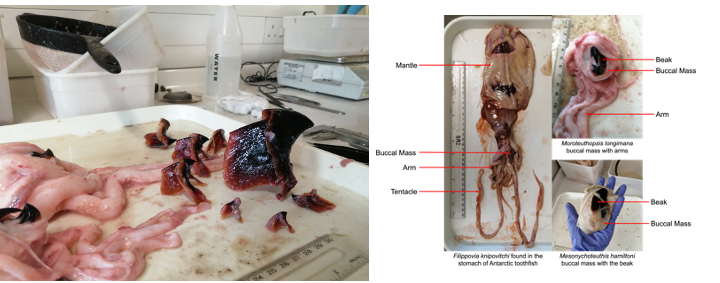
Figure 3: Squid beaks from several species found in the stomach of an Antarctic toothfish (darker parts, description on the right). The larger beak belongs to a Colossal squid (Mesonychoteuthis hamiltoni). [Credits: José Queirós]
Colossal squid beaks: from The Kraken to being the best tool to unveil the life of this giant!
During the 19th century sperm whales (Physeter macrocephalus) were hunted because of spermaceti (a waxy substance found in the head of sperm whales that was mainly used for candles and streetlights). It was during these hunts that whalers found large squid beaks in the whales’ stomachs (by large we talk about beaks of the size of an adult hand!). It was because of these beaks that whalers imagined that a large squid capable of sinking ships inhabit the southern oceans, creating the myth of the Kraken!ª
Nowadays, these beaks are among the most fascinating and helpful tool for a teuthologist (the scientists that study cephalopods). With one beak found in the stomach of predators like the toothfish we can tell the species of the individual (different species have different beaks), and we can estimate the size of the individual (we have what we call allometric equations that let us calculate the individual size and weight from the size of the beak). Through a series of chemical analyses on the beak we even know, where the squids lived, what they ate, their age, ontogenetic changes (how the ecology of the individual changed throughout its lifetime) and much, much more.
Still, the colossal squid (Figure 4) will always be one of the most mysterious giants in the world, it is evasive, no one sees it, and defies most of what we know about squid! Will we ever know everything about it? One thing we do know, is that millions of species in the deep-sea, and in particular in the Polar deep-sea, remain to be discovered. How many more giants inhabit the Polar Oceans that we don’t know about? The search will continue and hopefully, in a couple of years, we will be able to shed some light onto the functioning of this dark ecosystem!

Figure 4: The only Colossal squid in exhibition at the world is at the Te Papa New Zealand National Museum in Wellington. On the left we can see the preserved squid and on the right its beak. [Credits: Jose Queirós]
Further reading
- “Hunt for the Giant Squid” is a National Geographic Wild documentary that shows the attempts of scientists to film the colossal squid.
- To know more about the Colossal Squid: Rosa, R., Lopes, V. M., Guerreiro, M., Bolstad, K. S., & Xavier, J. C. (2017). Biology and ecology of the world’s largest invertebrate, the colossal squid (Mesonychoteuthis hamiltoni): a short review. Polar Biology 40.
- To know more about polar gigantism: Chapelle, G., & Peck, L. S. (1999). Polar gigantism dictated by oxygen availability. Nature 399.
- ªQuick note on the Kraken myth: there are two stories for the origin of the Kraken. The one I tell you about with the large beaks found in the stomachs of sperm whales and the other one, most common in the North Atlantic Ocean, that comes from the sight of a Giant Squid (Architeuthis dux), that can be found across the different oceans and can reach 25 m of size but is much lighter than the Colossal squid.
Edited by Lina Madaj
José Queirós is a PhD Student at the University of Coimbra, Portugal. He studies the structure and functioning of Southern Ocean food-webs, especially those connected to toothfish fisheries. Understanding the structure of the food-web allows us to understand the resistance of the community to external stressors such as climate change and fisheries. To study the food-web José uses the predators as biological samplers for lower trophic levels and builds the network identifying the prey in the stomachs but also using an array of chemical techniques such as stable isotopes or fatty acids. He tweets as @josepmqueiros. Contact Email: jqueiros@student.uc.pt


